Back in the mid 1800’s through the 1960’s, especially during the turn of the century, during the Belle Époque in continental Europe, the Victorian era in the British colonies, and the so-called “Gilded Age” in the United States, people believed in the future. This was more than just believing that the trend of one day following another would continue as time advanced. Back then, a large portion of society was aware of and believed in progress – the idea that with education, effort, and discipline, technology and society could be improved and that the future would be better.
This was a rather radical idea. Most societies throughout the history of the world were Romantic and backwards looking. They believed in lost golden ages or paradise in the distant past, and could only look with loathing and fear towards a degenerate future. In the tradition of the Romantic authors, mankind’s attempts to harness nature and improve his condition were sacrilege and blasphemy, and could only end in horror.
I am reluctant to call the former attitude Progressive to avoid conflating it with the modern political ideology that crudely attempts to own the future through its naming convention. (By and large, the Progressives aren’t Progressive in this sense at all: the Green subset of the movement fears and opposes a technological and abundant future. In the past, before the 70’s era neo-Malthusianism, there seemed to be a group of truly progressive leftists, and their loss is a loss for the movement IMO.) For the scope of the article, I’ll adopt the naming convention of Futurist – Romanticist axis.
These attitudes have been with mankind in varying degrees among people with varying temperaments since at least the ancient Greeks, probably since the dawn of speech. The classical Greeks, being scarily intelligent people (at least the ones who took the time to write), were probably some of the first to seriously toy with the Futurist attitude. (Actually, now that I think about it, I don’t recall many other ancient cultures generating legends where their heroes defeat their foes through cunning (metis) and technology, rather than brute strength and divine magic. Who else would have Archimedes and his mirrors burning the enemy fleets of Rome against Syracuse?)
But aside from the few comparative “bright spots” in ancient human history, the Romantic mode was the dominant mode of human thought. That began to change in the 1500s, until by the mid 1800s it was a dominant social force. In some respects, the characteristics of the era drove the Futurist mode of thinking to the forefront. If you were a peasant in one of the Prussian kingdoms in the mid 1800’s you could, within a single lifetime, witness the transformation of your world from one of primeval forests and cruel feudal principalities to one where industrial city states and walled merchant cities forced back the boundaries of untamed nature, where vibrant universities worked through all the mysteries of classical physics, and where innovation gave rise to factories, clocks, trains, electrification, flight, and the fumbling beginnings of scientific medicine. In America and the European colonies, the more familiar situation was the same: Edison, Westinghouse and Marconi tamed electricity and put it in the service of mankind. Mass production brought what was once fabulous wealth (not just cars, but *gasp* metal silverware and tools, large amounts of clothes, food and toiletries and cleaning supplies, pianos and sewing machines – this list of radical improvements is endless) into the reach of the average man. Horrifying plagues that previous civilizations cowered before were eradicated. These people were literally living in “the world of tomorrow” (at least until, in continental Europe, WWI tore that world apart). The literature of this era was the Jules Verne scientific romance (in continental Europe), and the Edisonade (in America).
There is a sort of retro-futurist fantasy literary movement called “steam-punk” (Think Wild-Wild-West) these days which attempts to embellish this era by giving them more technology and making it more ubiquitous than it actually was, but the truth is, it doesn’t take all that much embellishment to capture the heady nature of the era.
Below are some artifacts from that time – some cards from the back of cigarette cartons, portraying the advances that they looked forward to achieving in “This Era of Power and Wonder” – many of which, today, we would regard as mundane aspects of our day-to-day lives.
Enough about the past, what about the present?
I write this because I have noticed a rather disturbing trend in modern civilization: we seem to be losing the Futurist mode of thought. It was a noticeable cultural force through the 1960’s, but after that it seems to have sharply declined.
In terms of actual physical innovation, the “age of power and wonder” hasn’t ever stopped. This decade, like the many before it, has seen radical advances in science and technology, and brought improvements to our day-to-day lives. But people, for the most part, don’t believe in the future anymore. The optimism, of the Edisonade, the 50’s era adventure novel, the 60’s era Star-Trekkian space exploration novel, is gone.
Your mileage may vary, but I blame several movements for the loss of confidence, among them the postmodern movement which seeks to criticize and tear down the values and aspirations of society, and the neo-Malthusian green movement, which saw the continuing progress of technology and the ever increasing general prosperity that it created as the greatest threat to their desired future of an untouched, unspoiled planet.
Today, whenever an artifact of that prior period of confidence and optimism in technology is presented, it carefully arranged as a darkly ironic stab at the supposed sins of the era, never to be presented straight, as an honest statement of the hopes and dreams of the people of the time. When was the last time you saw one of those 50’s era futurist posters, such as for atomic energy (which, as far as I can tell, is still the best hope for meeting the energy needs of the earth) presented except as part of a dire warning against an “impossible” and naïve vision that can only end in horror?
Today, science fiction, necessarily the literature of the future, of what we hope to accomplish and build someday, is rudely classed with fantasy in our bookstores. Science fiction is regarded as trashy literature, and people who read it must be trashy social rejects and hopeless geeks. There is a malicious literary movement (called “mundane-science-fiction”, I believe) that ridicules any attempt by authors to portray a future with “unrealistic” hopes and dreams, such as mankind moving out into space, or the material needs of the earth being provided for, or for that matter, any world-changing advance at all. To these people, the only possible future is one that is the same or worse than the present. To them, we stand at the apex of science and understanding – there is nothing new to be discovered, there is nothing world-changing to be invented, just newer and shinier toys that are just like the ones we already have. (And, rather than being a sign of abundance and the climb away from poverty, are regarded as a trashy, empty thing to aspire to anyway.)
This is poisonous. Fortunately for the world, it is also bullshit.
The Future: This New Age of Power and Wonder:
At this very moment, you are sitting in front of more computational power than the entire country had in 1970 when NASA landed men on the moon. You could, if you know how and are a good programmer, use this computing power to simulate *anything*, to work out the numerical consequences of the most radically complicated math, and to bring miniature universes to life. You could iteratively seek optimized solutions to any problem you are capable of posing in sufficient detail. You are using it to read documents authored halfway across the world for an arbitrarily low cost. You could fit all the books written in human history on a device that can fit in your hand, and said device would cost a fraction of your monthly income. (Yay computers, enough about computers – this is one area that is at least acknowledged).
At this very moment, in AI labs around the world, people are experimenting with structures capable of learning and adapting to their surroundings. Scientists are embarking on the complete “uploading” of the brain of a fruit fly, and the working of it in software. We are on the verge of having our hands on the very stuff that minds are made of!
http://nextbigfuture.com/2010/04/cell-by-cell-map-of-fruit-fly-brain.html
At this very moment, our space telescopes are discovering thousands of new planets orbiting other stars. The Kepler spacecraft is even discovering terrestrial worlds in habitable zones of their stars: potentially earthlike worlds.
http://arstechnica.com/science/news/2011/02/nasas-kepler-status-report-1235-exoplanet-candidates.ars
Space probes from around the world are seeking out and drilling into the surface of asteroids, and penetrating the atmospheres of unexplored moons across the solar system.
http://en.wikipedia.org/wiki/Huygens_%28spacecraft%29
http://b612.jspec.jaxa.jp/mission/e/hayabusa2_sequence_e.html
http://en.wikipedia.org/wiki/Hayabusa
At this very moment, teams of manufacturers are competing to produce machines that can reliably and efficiently print out parts completely specified in software, as easily as you can print a document today.
http://en.wikipedia.org/wiki/3D_printing
At this very moment, private companies have taken up the banner of space-flight and are launching things into orbit. http://www.spacex.com/
Biologists are mapping the genome and how it translates into the operation of cells and organisms. Not only can we take genetic material apart, now scientists are capable of writing it out from a software recipe and getting it to “run” again. While biology remains extraordinarily mind-bendingly complicated, we are beginning to use our vast computational resources to reverse-engineer the machinery of life. We are beginning to use life to mass produce structures small enough to fit inside a cell – capsules to selectively deliver anti-cancer medication in one example. With the very stuff of life firmly in our control, who knows what we could accomplish –The improvement of memory and intelligence? The replacement of organs? The ending of disease, possibly of aging and death from old age itself?!
None of this is science fiction. These wonders are *real*. This stuff is going on in government and industry labs all over the world, and in some cases in people’s garages, in airport hangars, in machine shops.
The continuing adventure of the modern age deserves that old optimism, if all it gets is cynicism. If all you had to go on was our popular culture today, you would think the future was a bleak and hopeless thing, best avoided – and that would be a terrible disservice to your outlook. Other than people with a futurist attitude writing and disseminating art and literature that express a proper attitude towards the challenges and opportunities of the future, I don’t see quite how to solve the problem of the degeneration of modern art. Perhaps it is a temperament thing – perhaps the people who would naturally produce these works are too busy creating the future to write about it and depict it, and so we are left with the dour, cynical Romantics to produce our art and literature. Perhaps part of the solution is to push back against the social stigma against futurist literature, and to insist that science fiction is indeed a literature of profound and important ideas. And besides, even though geeks may not be at the apex of the high-school/primordial social pecking order, realistically who else is going to be out on the frontiers of human knowledge and experience, blazing the trail, going boldly where no one has gone before? What could be cooler than that?
To turn your back on the future, to write off the promises of science and technology in this era of all the eras in human history, is to miss one of the most profound intellectual adventures that mankind has ever embarked upon!
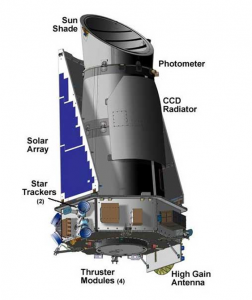
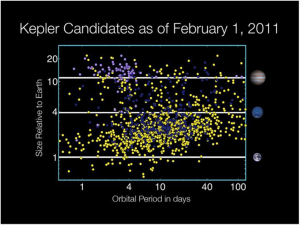

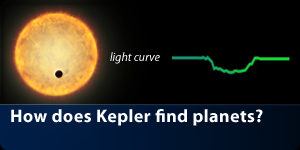
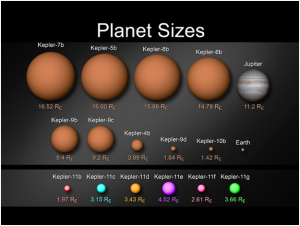
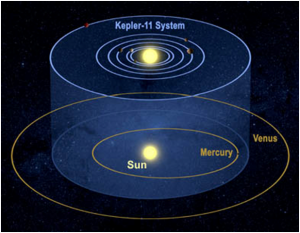
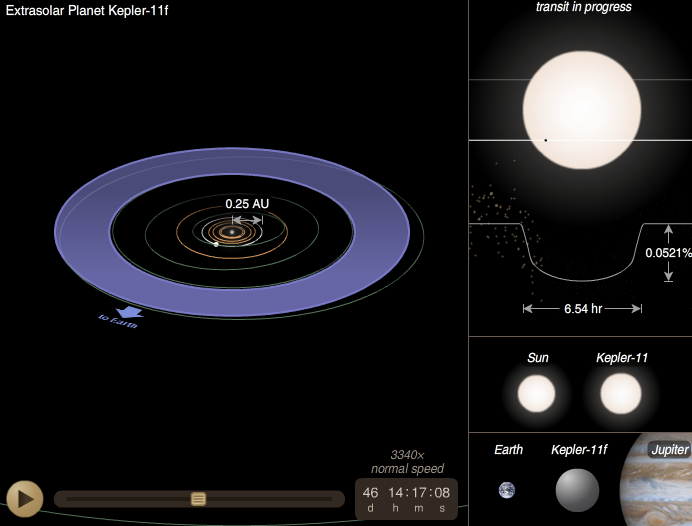
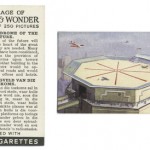

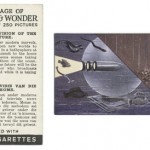



Recent Comments: